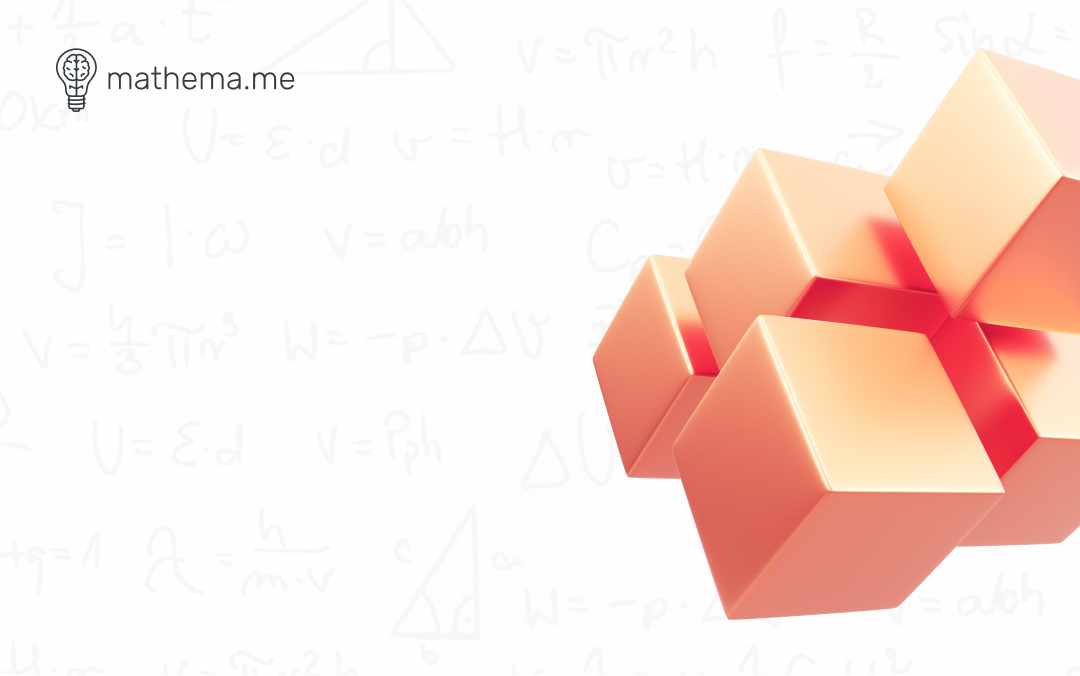For children just beginning to explore the world of mathematics, the abstract nature of some math concepts can be challenging to grasp. They may struggle to understand why 2+3 equals 5, prompting teachers to engage their imaginations. Hence, we see problems framed with characters and objects: “Petrik had four apples and gave away two. How many does he have left?”
Imagination and visualization are key tools for helping young learners count. Mental arithmetic utilizes a similar approach. It’s a technique that enables quick mental calculations, enhances creativity and logic, and is not just for the youngest learners. The online math school Mathema delves into what mental arithmetic is and its benefits for children.
What is Mental Arithmetic?
Mental arithmetic is the ability to solve mathematical problems and perform calculations in one’s head, without relying on a calculator, writing things down, or memorizing answers in advance. This method isn’t a natural talent or gift but rather a skill that can be cultivated and developed.
The roots of this method stretch back to Ancient Greece. Archaeologists have discovered special counting devices called “abacuses.” These tools aided the Greeks in swiftly adding, subtracting, dividing, and multiplying numbers. Similar devices were also used by the ancient Chinese. In China, mental arithmetic continues to be a part of the school curriculum to this day.
Abacuses are not calculators; they don’t display the correct result but assist in visualizing the number series and breaking it down into smaller segments. Children are often introduced to the workings of an abacus and then taught to mentally visualize it during calculations.
Methods for Learning Mental Arithmetic
Mental arithmetic is taught systematically by educators and math tutors. However, it’s also possible to practice at home with parents. Here are some methods for developing mental arithmetic skills:
Number Talks
This method was created by Ruth Parker and Kathy Richardson, leading educators in elementary arithmetic. It involves commenting on and discussing your thought process during calculations with someone else.
Ask your child to calculate an example with a two-digit number, such as 18×5 = ?. There are several ways to calculate the result: 10×5+8×5 = 50+40 = 90, 9x5x2= 90. Have the child explain which method they chose for the calculation. Then discuss it and offer alternative options.
Using an Abacus
The abacus, or soroban, is a device we mentioned earlier that helps visualize numbers and their operations. It usually consists of several wires with beads strung on them. The first row represents units, the second tens, the third hundreds, and so on.
Teach your child how to use an abacus. Once they have mastered it, ask them to solve an example by imagining the abacus mentally. There are many tutorials online on how to count using such a device, such as this video.
Parallel Activities
In this method, children should count while simultaneously engaging in creative activities like drawing, dancing, or singing. The idea is to engage both parts of the brain during calculations to increase productivity. Start with simple examples and then move on to more complex ones. Besides mental arithmetic, this division of attention develops multitasking and concentration skills.
How Does Mental Arithmetic Work?
In the example of parallel activities, we discussed the simultaneous involvement of both brain hemispheres. This concept underlies mental arithmetic. The human brain functions much better when both halves are used. Imagining number series or an abacus activates the right part of the brain, responsible for imagination and abstract thinking, while counting activates the left hemisphere.
Furthermore, mental arithmetic is beneficial in the long term. Both parents and teachers are familiar with the “summer vacation” problem, where children often forget part of the material they learned in the previous grade after a three-month break. This is due to memorizing specific facts, which our brain erases in favor of more current and fresh knowledge.
However, mental arithmetic is not just a set of facts but a skill, akin to riding a bicycle. Once mastered at a high level, it’s nearly impossible to forget.
Mental arithmetic also enhances logic, creative thinking, self-education abilities, imagination, and many other useful qualities. These skills will be useful when studying other subjects, not just those related to mathematics.
Teaching Your Child Mental Arithmetic
Online Learning
If there’s no such school in your area, you can turn to online math tutors. Mathema has specialists who teach mental arithmetic to children of various ages. Register on their website and inform the manager that you’re interested in starting mental arithmetic classes. They will help you find a tutor tailored to your child’s age and goals.
Home Lessons
You can also teach your child at home by combining the methods described above. There are numerous approaches, and we’ve only touched on the most popular ones here. Keep in mind that a systematic approach during live or online sessions with a teacher is more effective and will yield better results.



